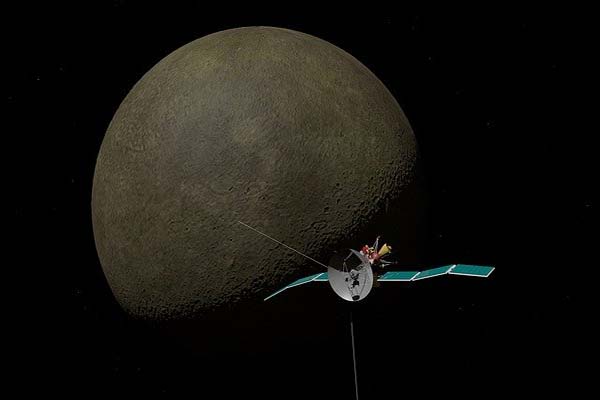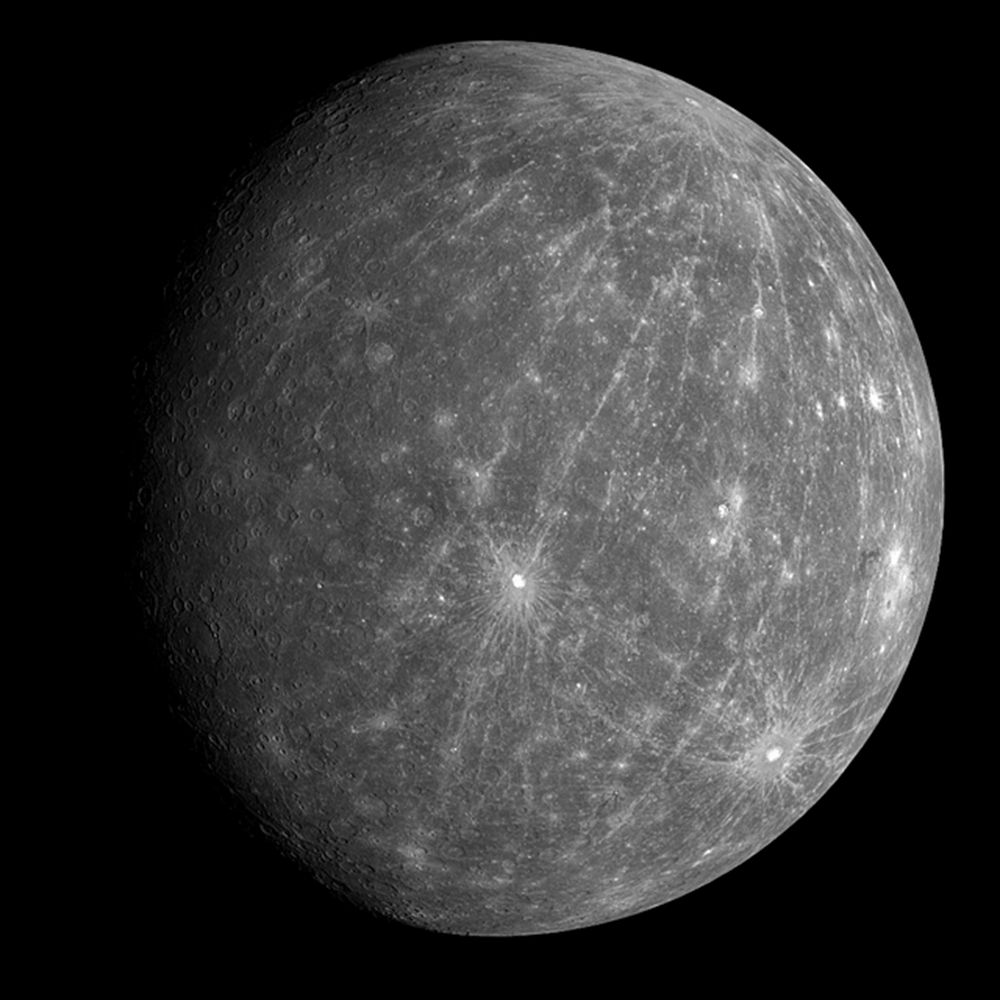Most of us enjoy reading about the planets in the solar system. But one that has caught the attention of readers is Mercury. It’s the tiniest planet of the solar system. And there are many surprising things about this planet. However, the first thing you need to know is how long it takes this planet to rotate. Let’s figure out the answer.
How long does it take for Mercury to rotate?
First, Mercury is not the type of planet that spins faster on its axis. Compared to earth, it spins slowly and thus has a much longer day than we have on planet earth. It takes Mercury a whopping 59 earth days to rotate on its axis. Also, a single day on Mercury is approximately 1407.5 hours long. For our dear earth, a day is approximately 23.934 hours long.
So that’s the answer to the question, but I didn’t stop there. I wanted to provide more information on Mercury for a better understanding of the planet. So continue reading!
Surviving In Mercury: Is It Possible?
Well, everything is possible; that is what many would say. And I quite agree, considering how science and technology have shaped life on earth and beyond. But when it comes to things like living in Mercury, many questions will undoubtedly pop up.
So is it possible to live in Mercury? Has life ever existed there? Your guess is as good as mine.
The mercurial world is an extreme one. There, you will come across hot and cold temperature. Some parts of the planet might be extremely warm and some areas cold.
Well, the thing is Mercury is a weird planet, in my opinion. The side facing sunlight has a temperature that’s as high as 426.85 degrees Celsius, while the one that is not getting any sunlight is as cold as anything.
What does scientist believe about life on the tiniest planet, Mercury?
Well, they believe that life has never existed there. The atmosphere on Mercury is another thing to consider. It almost does not exist. The reason I am saying this is that the planet receives harsh radiation, and the atmosphere doesn’t do anything to protect it.
Think about planet earth without an atmosphere. That’s how Mercury is. No atmosphere to shield one from the scorching heat of the sun, including radiation that comes from space. The atmosphere does not do well to trap the heat in the planet to offer a breathable atmosphere that can support life.
So What’s The General Conclusion About Life In Mercury?
Well, the thing is Mercury is a sterile and inhabitable planet. Life hasn’t also existed there, and there is no chance it will.
What Can Make It Possible For Mercury To Sustaining Life?

Well, there are many things this planet needs to get right. First, it needs to have a form of temperature that permits liquid to stay for a longer time on its surface. However, the current temperature of the planet makes it harder for liquid water to exist in the said environment. Again, there is a belief that any form of ancient life that has existed on the planet would have faced numerous extinction activities. Let’s consider planet earth as a good example. Several life forms have lived and have been terminated by the impacts of asteroids that visited the planet.
Can you recall what the dinosaurs faced? They would have still been here with us if not for the impact years ago. However, the pictures taken by the MESSENGER and Mariner 10 spacecraft of Mercury reveals that the planet had suffered massive impacts in time past.
The Heavy bombardment recorded 3.9 billion years past was one of the numerous impacts that visited the planet. So, if there were living things on the planet before the incident occurred, it would have wiped them out.
Scientists also believed that a large portion of Mercury’s surface was wiped off by a single impact. So, if it had life, there’s a big chance the impact would have wiped them off.
Does Any Evidence Points To Life On Mercury?
Well, I know there are no evidence indicating that life once existed in other planets besides earth. But Mars is said to have some qualities that supports life.
In short, all the pieces of evidence scientists have in their possession shows that life has never existed in Mercury, and it will never exist there. In addition to the planet’s tenuous atmosphere, its hard condition makes it difficult or impossible for life to survive there.
So, Elon Musk can talk plan a visit to the red planet, Mars. He can also think of colonizing the planet someday. But nobody talks about Mercury. And the reason is because the planet is inhabitable.
Facts You Need To Know About Mercury
Well, the first we are going to look at is about the size of the planet. Mercury is considered to be the smallest of all eight planets in the solar system. And when you consider its distance across its equator, Mercury is 4879 km compared to earth that is 12,742 km.
The next fact about Mercury is its hotness. Do you know it’s the second hottest among all the planets in the solar systems? That’s it.
Still, on the hotness, the part of Mercury facing sunlight has a temperature that’s approximately 426.85 degrees Celsius. But things are different on the other side that’s not getting any sunlight. The temperature there can even be lower than -173 degrees Celsius. And it’s all because the planet lacks an atmosphere whose job would have been to regulate temperature. However, the hottest planet is Venus.
Another fact about Mercury is its date. The real date it was discovered is unknown. However, the first time it was mentioned at about 3,000 BC was by the then Sumerians.
Also, Mercury is considered to be the closest planet to the sun. It also takes this planet a whopping 88 earth days to orbit around the sun. So how long is a year on this planet?
Surprisingly, a year in Mercury is relatively short. It is just three months when compared to what we have on planet earth.
Again, Mercury tends to move fastest during the time it is closer to the sun. But when it is far away, it tends to be slower.
Planet Mercury: What Does It Look Like?
There is more to learn about Mercury. But I am glad we have touched on vital areas and why life cannot exist in that strange and dangerous place.
However, our focus at this point is to look at the physical features of Mercury for better understanding and appreciation of the planet.
Well, for starters, Mercury sits closer to the sun. Scientists have also figured out that this planet does orbit the star at an average distance of approximately 57.9 million km. But here is another surprising thing about the planet. It can travel around the sun for approximately 88 days.
Also, it was previously known that the solar system had 9 planets. Many textbooks still have this as the standard, anyway. It was discovered that Pluto was just a dwarf planet. It lacked the features a planet is supposed to have.
As a result, Mercury assumed the position of the smallest planet on the solar system, and it measures 4879.4km in diameter and has a density of approximately 5.43 g/cm³, which is considered to be the second-highest when you consider what other planets have.
A look at images of Mercury shows that its moon and that of planet earth are difficult to differentiate.
Mercury is also considered to be a rocky planet and much of the planet’s interior comprise of a large iron core. In short, this core occupies approximately 3/4 of its diameter. Another thing is the iron core of Mercury. Its size is almost equivalent to that of the moon.
If you are also looking for a planet with a massive amount of iron, then you can consider Mercury. Iron is approximate 70 percent of the planet’s total weight. Hence it is considered to be the richest iron-bearing planet in the solar system. On its core, you will also find a rocky shell that’s approximately 350 miles in thickness.
Wrapping It Up
I hope you now understand the answer to the question, “how long does it take for Mercury to rotate?” I gave details of this at the beginning of this post. But what I also want you to understand is that Mercury is one planet that does not support life. In short, researchers and scientists believe that the planet has never witnessed any life form since it came into existence. At times, a part of the planet can be extremely warm, while another part can be freezing. That is how unique this planet can be. It also does not possess an atmosphere. And as a consequence, heat from the sun and outer space are never shielded.
You May Like These Articles As Well:









